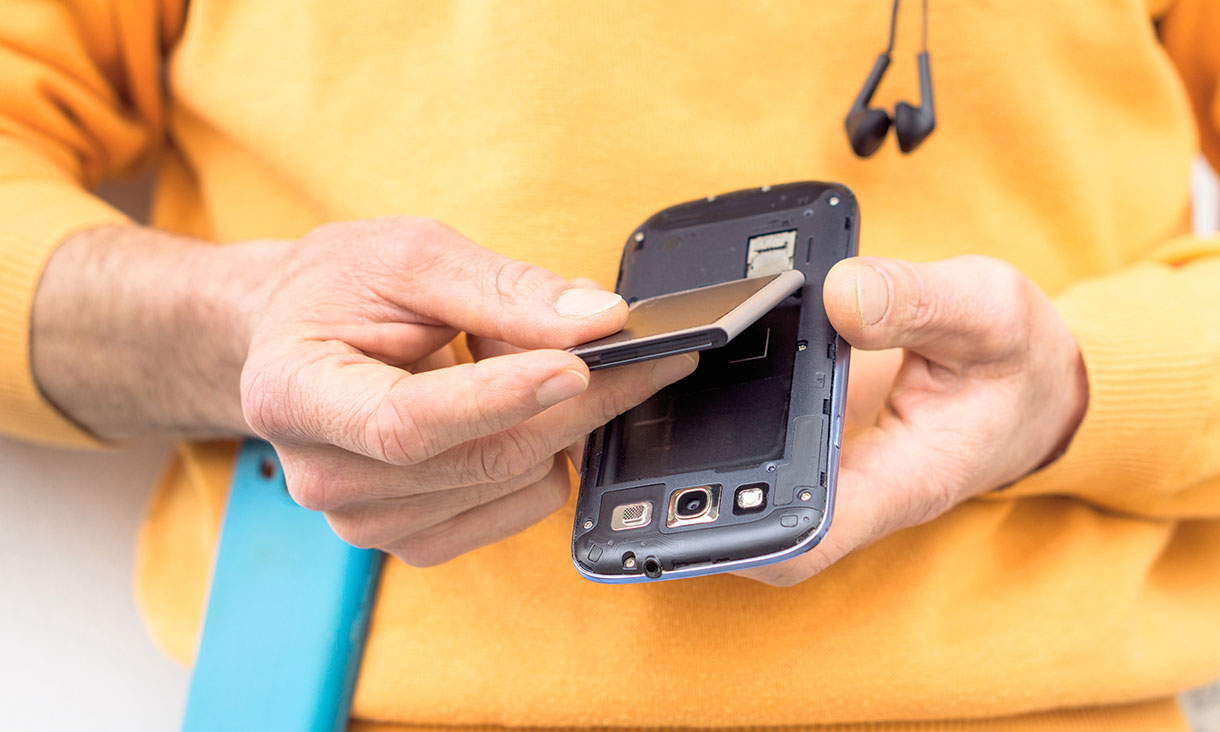| Jan 25, 2023 |
Recyclable mobile phone batteries a step closer with rust-busting invention
(Nanowerk News) Mobile phone batteries with a lifetime up to three times longer than today’s technology could be a reality thanks to an innovation led by engineers at RMIT University.
|
|
The research is published in Nature Communications ("Recovery of oxidized two-dimensional MXenes through high frequency nanoscale electromechanical vibration").
|
|
Rather than disposing of batteries after two or three years, we could have recyclable batteries that last for up to nine years, by using high-frequency sound waves to remove rust that inhibits battery performance, the team says.
|
|
Only 10% of used handheld batteries, including for mobile phones, are collected for recycling in Australia, which is low by international standards. The remaining 90% of batteries go to landfill or are disposed of incorrectly, which causes considerable damage to the environment.
|
|
The high cost of recycling lithium and other materials from batteries is a major barrier to these items being reused, but the team’s innovation could help to address this challenge.
|
|
The team are working with a nanomaterial called MXene, a class of materials they say promises to be an exciting alternative to lithium for batteries in the future.
|
 |
| Only 10% of used handheld batteries, including for mobile phones, are collected for recycling in Australia, which is low by international standards.
|
|
Leslie Yeo, Distinguished Professor of Chemical Engineering and lead senior researcher, said MXene was similar to graphene with high electrical conductivity.
|
|
“Unlike graphene, MXenes are highly tailorable and open up a whole range of possible technological applications in the future,” said Yeo from RMIT’s School of Engineering.
|
|
The big challenge with using MXene was that it rusted easily, thereby inhibiting electrical conductivity and rendering it unusable, he said.
|
|
“To overcome this challenge, we discovered that sound waves at a certain frequency remove rust from MXene, restoring it to close to its original state,” Yeo said.
|
|
The team’s innovation could one day help to revitalise MXene batteries every few years, extending their lifetime by up to three times, he said.
|
|
“The ability to prolong the shelf life of MXene is critical to ensuring its potential to be used for commercially viable electronic parts,” Yeo said.
|
How the innovation works
|
|
Co-lead author Mr Hossein Alijani, a PhD candidate, said the greatest challenge with using MXene was the rust that formed on its surface in a humid environment or when suspended in watery solutions.
|
|
“Surface oxide, which is rust, is difficult to remove especially on this material, which is much, much thinner than a human hair,” said Alijani from RMIT’s School of Engineering.
|
|
“Current methods used to reduce oxidation rely on the chemical coating of the material, which limits the use of the MXene in its native form.
|
|
“In this work, we show that exposing an oxidised MXene film to high-frequency vibrations for just a minute removes the rust on the film. This simple procedure allows its electrical and electrochemical performance to be recovered.”
|
The potential applications of the team’s work
|
|
The team says their work to remove rust from MXene opens the door for the nanomaterial to be used in a wide range of applications in energy storage, sensors, wireless transmission and environmental remediation.
|
|
Associate Professor Amgad Rezk, one of the lead senior researchers, said the ability to quickly restore oxidised materials to an almost pristine state represented a gamechanger in terms of the circular economy.
|
|
“Materials used in electronics, including batteries, generally suffer deterioration after two or three years of use due to rust forming,” said Rezk from RMIT’s School of Engineering.
|
|
“With our method, we can potentially extend the lifetime of battery components by up to three times.”
|
Next steps
|
|
While the innovation is promising, the team needs to work with industry to integrate its acoustics device into existing manufacturing systems and processes.
|
|
The team is also exploring the use of their invention to remove oxide layers from other materials for applications in sensing and renewable energy.
|
|
"We are keen to collaborate with industry partners so that our method of rust removal can be scaled up," Yeo said.
|

